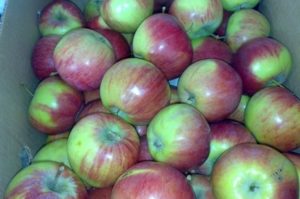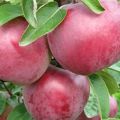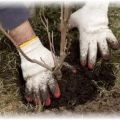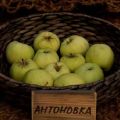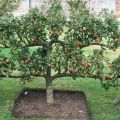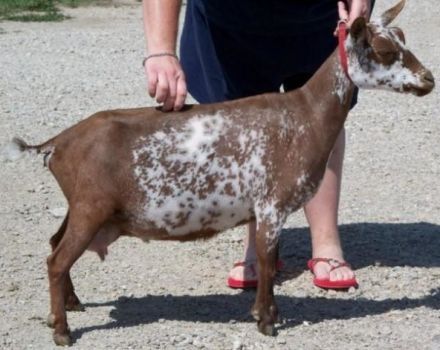Description of the features of ripening and fruiting of the ornamental apple tree Ola
One of the best ornamental crops is the Ola apple tree. The Ola apple variety was bred by Polish breeders to be used in landscape design and to decorate gardens with parks and streets with it. Today it is popular in this business and as a garden culture among summer residents. What it is, what types of apple trees are there and much more.
Description of Ola's apple tree
Any description of Ola's decorative apple tree will say that it is used for decoration as a hedge. It will also indicate that it brings a rich harvest and serves as a garden crop with bright leaves and small fruits.
An adult apple tree reaches a size of 5 meters. It grows 40 centimeters annually. It slows down its growth every year. Its crown has a thin, round, openwork and spreading structure. The bark has a purple-brown color. The leaves are simple, elliptical.
In spring, depending on the species, they turn chocolate color, and closer to summer they become dark green and shiny. In autumn, like other apple trees, Ola's leaves turn yellow and brown.
The plant blooms towards the end of spring. Blooms profusely, about two weeks. During flowering, it is covered with large, dark pink and fragrant flowers. The fruits are formed from these flowers towards the beginning of September and remain hanging on the branches until December. Apples have a tough, juicy and tasty pulp. You can make various products from them or eat them fresh. This type of apple tree belongs to pollinating plants. This means that by planting it next to other fruit trees, you can attract many insects and increase the yield of these crops.
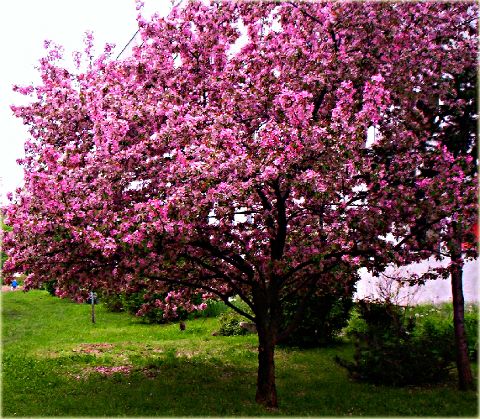
Ola grows picky on nutritious, moderately moist soil, well illuminated by light. It also feels comfortable in partial shade. Propagated by seeds and cuttings.
Breeding history of the variety
The variety has its own breeding history. It was first bred in 1970 in Poland, crossing two types of apple trees - Cardon and Arthur Turner.
There are two variants of the history of the creation of the name of apples. According to the first of them, the variety was called the Spanish greeting, since it resembled in appearance and in taste the Spanish purple paradise apples. According to the second option, the apple tree is called so because it is unpretentious and “friendly” to all summer residents. The scientific name of the culture is Malus purpurea Ola.
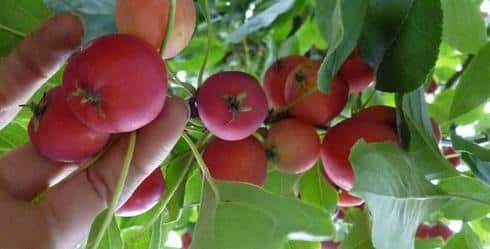
What subspecies are there?
The Ola apple tree has several varieties, which differ from each other in color and size of fruits and leaves, longevity and disease resistance. This variety is the result of hard selection work that has been carried out to obtain the most beautiful and valuable forms of decorative apple trees.
Red-leaved
The Ola Krasnolistnaya apple tree is a sturdy and strong four-meter tree covered with red leaves. One of the hybrid varieties that retain the color of the leaves from spring to autumn leaves. The red-leaved hybrid is resistant to cold and disease. Grows well in the center of Russia, Siberia and the Urals.
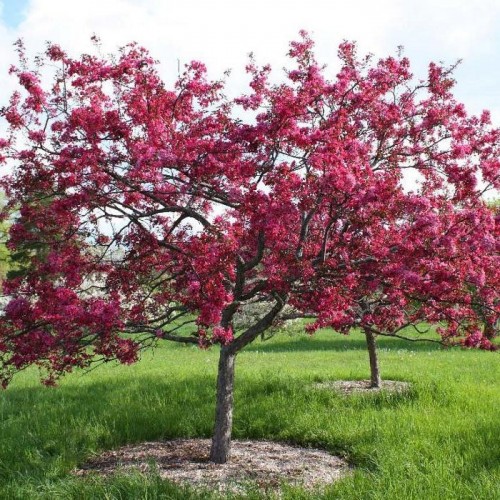
Hybrid
The hybrid Ola is an apple tree with a regular spherical crown 5 meters high. The crown of the tree is represented by simple elliptical green leaves that turn yellow in autumn. The buds take on a red hue and turn into large four centimeter flowers.
Flowers of a hybrid species are collected in umbellate inflorescences on short shoots. By the beginning of flowering, they have a dark pink color, and at the end - white-pink with yellow stamens. Bloom at the end of May for 2 weeks. The fruits are filled with crimson and are 3 centimeters in diameter. They differ in rich taste and aroma.
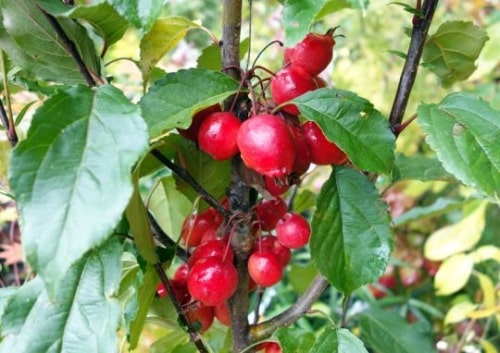
The soil for the hybrid species requires nutritious. The place is sunny or slightly darkened. It can coexist with other fruit trees, or it can grow alone. Hybrid Ola is characterized by gas resistance, winter hardiness and resistance to diseases of apple trees.
Features of ripening and fruiting
All types of Ola apple trees are light-requiring. They should be planted directly in open ground, well-lit by sunlight. It also takes root well in partial shade. Will die in the shadows. Prefers fertile (rich in potassium, nitrogen and humus), drained and deep soils. Resistant to cold, heat and disease. In severe drought, it may die or stop actively bearing fruit.
To achieve the highest decorative effect and yield, it is recommended to plant in the sun and water abundantly (more than 20 liters per day in portions). He likes feeding well, does not experience transplants well. It is recommended to prune branches in the spring to stimulate active growth and propagation of the tree. When one tree is ill, disinfection with special chemicals is required for all trees.
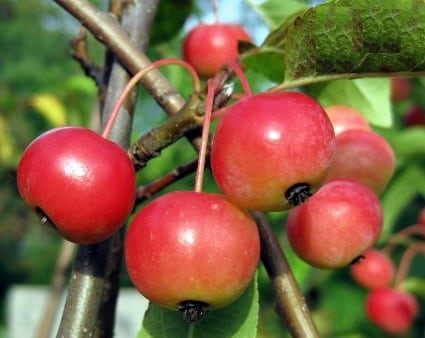
Fruiting annually until its 50th anniversary. Every year after 20 years, fruiting decreases. From a young 3-year-old tree, you can harvest up to 20 kilograms of the crop. The peak of fruiting activity occurs by 5-6 years. By this age, the plant is covered with a rich crown with numerous fruits and yields up to 50 kilograms.
Winter hardiness and disease resistance
The plant shows high rates of resistance to pests, diseases and cold weather. She is not afraid of strong winds, frosts, scab and powdery mildew. Fungal diseases will also bypass the tree, even with heavy rainfall.
Naturally, when a nearby plant gets sick, Ola can also get sick. In this situation, disinfection of both cultures is required.
In which region is it better to grow?
The Ola apple tree takes root well in most regions and regions of Russia. Basically, it grows well in the center, closer to Moscow. It is also actively grown in the Urals and Siberia. There she gives noticeably less yield than in the center, but she feels good.

